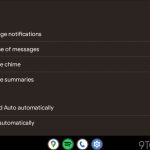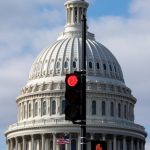The victory of the alliance led by Prime Minister Narendra Modi is taken for granted, but in large and populous states such as Maharashtra and Uttar Pradesh there has been a hand-to-hand fight for key seats. Even within the opposition, led by Congress, there has been a rise of regional and local parties. Card Thanks to : “A politically conscious vote.”
New Delhi () – After several hours of electoral counting, the alliance of which Prime Minister Narendra Modi’s party is part, known as the National Democratic Alliance, NDA, continues to appear ahead of the opposition bloc, known as INDIA. However, the lead of Modi’s Bharatiya Janata Party, which is forecast to not exceed 300 seats, is much smaller than that predicted yesterday by the first exit polls after the polls closed on Saturday. If the forecast is confirmed, Modi will need an ally in the Government to remain in power.
“As the count progresses, one thing is increasingly clear: the Indian people have renounced the divisive and hateful politics of some political parties, and have resolutely opted for a more socially inclusive and politically transparent system of government,” he commented. Father Babu Joseph, former spokesperson of the Episcopal Conference of India. “The results are local, not a landslide victory for one party,” the priest continued, referring to the BJP, which had predicted in the campaign that it would win 400 seats. “The results released so far put an end to all the exaggerations and anticipations predicted by the exit polls,” according to some analysts. had pointed out yesterday that they were not particularly reliable.
Elections for the 543 seats in the Lok Sabha, the lower house of Parliament, began in mid-April and ended on June 1. To govern, a majority of 272 seats is needed. According to forecasts, the BJP will obtain just over 240 seats, and the coalition allies just over 50.
In Uttar Pradesh, the most populous state with the largest number of seats, considered a stronghold of the BJP, the Election Commission website offers a face-to-face between the ruling party and the opposition. Even in Maharashtra, one of the major states of the Indian Union, a similar situation has been recorded. Trends in a state like Uttar Pradesh have often been replicated at the national level, experts say.
“I am happy that democracy is flourishing in India,” the Cardinal of Bombay, Bishop Oswald Gracias, told . «It shows that people are politically aware and vote correctly. Whatever government comes to power, the Church will certainly cooperate,” he added. “It gives us joy to think that the whole process developed in a peaceful and orderly manner, this shows that there will also be a healthy opposition. I think this is good for the country, for democracy and for the future.”
“We do not have the definitive results,” the cardinal continued, “but they have been well-fought elections, even though they have lasted a long time. But in the end it was worth it.” Furthermore, the Church is “politically aware of the needs of the people and the country. “I’m glad that the turnout was quite good, although it could have been better, and that people took the elections seriously.”
The vote took place in seven phases, each one with a participation of more than 60%. Nearly 970 million citizens were called to vote under temperatures of between 42 and 48 degrees, which prevented many people from leaving their homes.
The seats allocated so far to the opposition indicate a greater rise of regional parties, rather than the Congress, which leads the INDIA coalition, with a total of about 220 seats.
In the 2019 elections, the BJP had managed to win over 300 seats, rising to over 350 thanks to allies. This allowed him to pursue an agenda centered on Hindu ultranationalism. On the other hand, the Congress party, which governed for years after the country’s independence, and today led by Rahul Gandhi, has been losing popularity due to corruption scandals and the lack of new and future proposals.








![[Img #74675]](https://thelatestnews.world/wp-content/uploads/2024/12/They-discover-a-new-class-of-X-ray-sources-in-the-150x150.jpg)



Add Comment